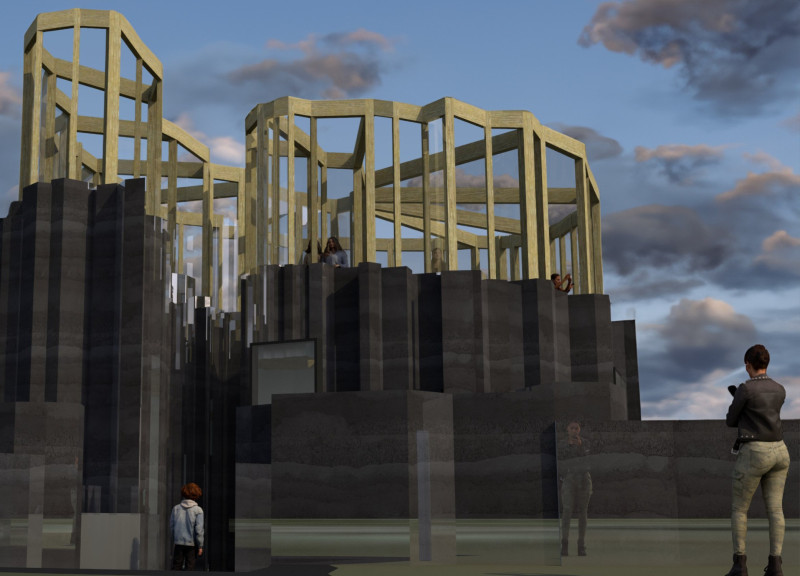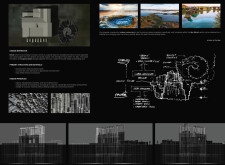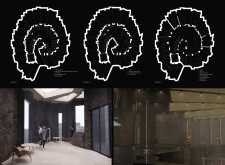5 key facts about this project
**Project Overview**
Situated north of Vatnajökull National Park and Lake Mývatn in Iceland, "Steinn í Stöðuvatn" addresses the dual challenges of increasing tourism and the preservation of the region’s unique ecological features. The design aims to harmonize with the surrounding volcanic landscape, characterized by geological formations and geothermal activity, while also providing critical infrastructure to enhance the visitor experience and support the local economy.
**Conceptual Framework and Spatial Strategy**
Rooted in organic architecture, the design evokes the region's basalt formations, adopting a form reminiscent of hexagonal pillars found in nature. The building’s organic, non-linear structure diverges from traditional rectilinear designs, fostering an intimate relationship between human activity and the environment. The layout unfolds across three levels, guiding visitors through various functions such as a café, spa, bar, and retail spaces, each seamlessly integrated into the overall design to facilitate exploration and community interaction.
**Materiality and Sustainability Practices**
The project employs a variety of local materials to elevate ecological sustainability. Rammed earth, derived from local excavation spoils, forms the primary walls, while a carefully colored concrete mimics the local terrain, creating continuity between the natural and built environments. Mass timber elements provide structural support and enhance the aesthetic warmth of the interior spaces. Glass is utilized strategically to maximize natural light, forge visual connections with the lake, and promote energy efficiency. The design emphasizes responsible resource management and material reuse, positioning itself as a model for contemporary ecological architecture.






















































